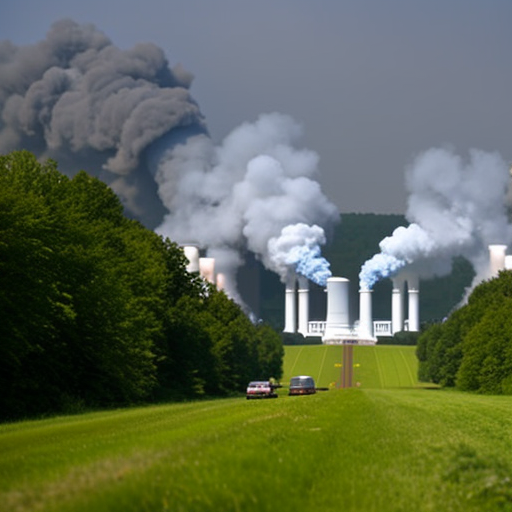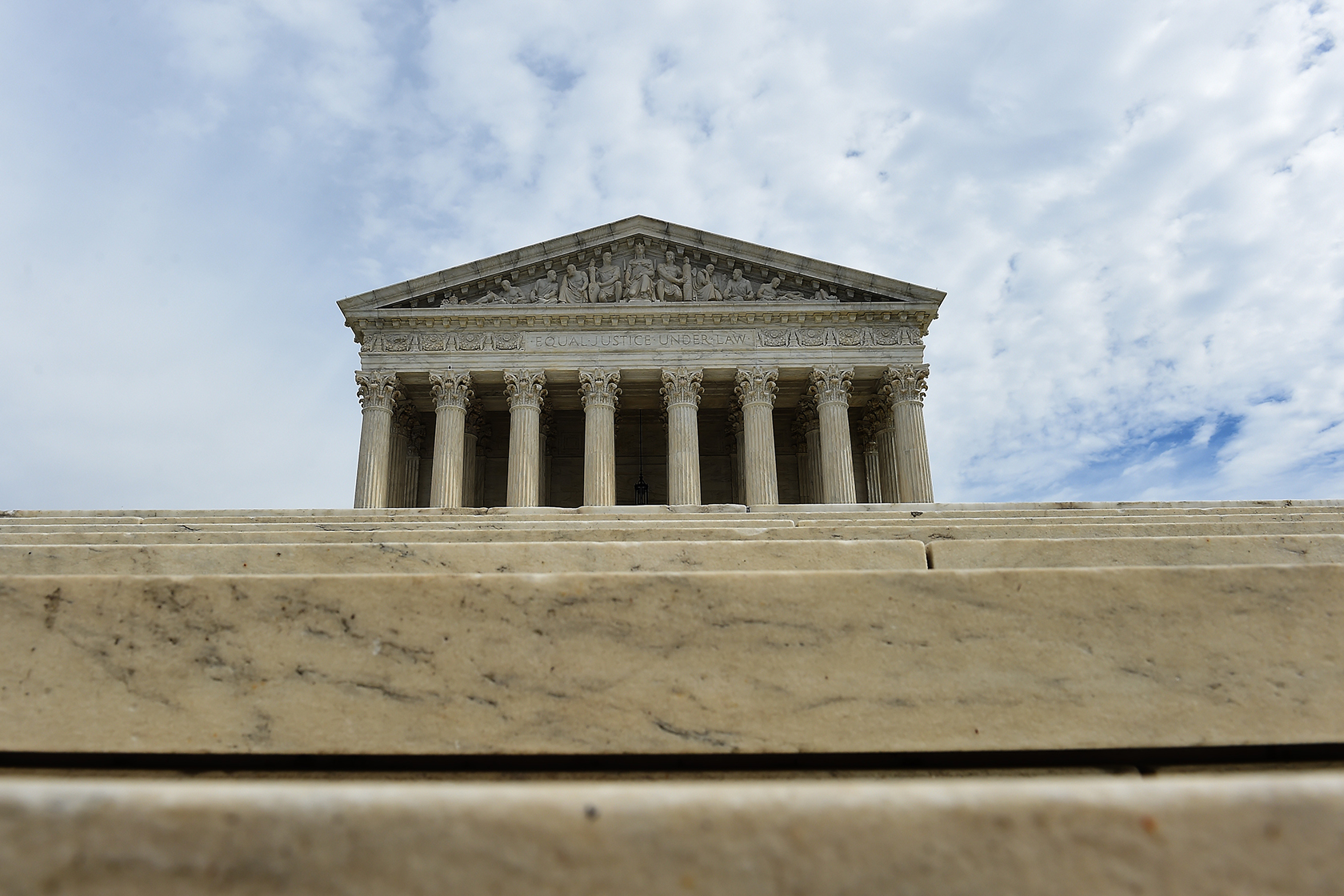Ohio v. EPA Threatens the EPA’s Ability To Regulate Air Pollution Nationwide
Ohio v. EPA Threatens the EPA's Ability To Regulate Air Pollution Nationwide Center For American Progress


Supreme Court to Hear Arguments on EPA’s Good Neighbor Plan

The Sustainable Development Goals and Ohio v. EPA
- Goal 3: Good Health and Well-being
- Goal 13: Climate Action
- Goal 16: Peace, Justice, and Strong Institutions
On February 21, 2024, the Supreme Court will hear oral arguments for an emergency petition to postpone implementing the U.S. Environmental Protection Agency’s (EPA) “good neighbor plan,” which is meant to protect downwind states from high levels of ozone pollution. Unusually, the court is holding oral argument in this matter even though it originates in the notorious emergency docket known as the “shadow docket.” Unlike in the traditional merits docket, cases heard in the shadow docket typically are decided without oral argument on a fast-tracked basis and often are procedural in nature. In Ohio v. EPA, the court has chosen to hear arguments to determine whether the good neighbor plan should be paused while litigation in the lower courts continues. A stay of the plan could allow upwind states to emit approximately 70,000 additional tons of smog-creating nitrous oxide by the peak of the 2026 summertime ozone season, causing up to 1,300 premature deaths and increased hospital visits for thousands of Americans with asthma or other respiratory problems each year. This case serves as another opportunity for this radical, right-wing Supreme Court to rule in favor of powerful industry polluters over the safety and welfare of the American people.
The who, what, and why of Ohio v. EPA
The Clean Air Act (CAA) requires upwind states to ensure that their pollution emissions do not interfere with downwind states’ ability to meet federal ozone standards. All states must submit implementation plans to the EPA for approval that include how municipal, local, and state governments will regulate industries to meet the federal regulatory requirements. Should state plans fail to meet these standards, the EPA is required to issue a federal implementation plan instead. In 2023, the EPA disapproved 21 state plans for failing to meet the standards and then issued the good neighbor plan to require that upwind states prohibit or limit the ozone pollutants of certain industries.
Exposure to ozone pollution can lead to major health problems, especially for children and the elderly, including triggering asthma, bronchitis, emphysema, and early death. Since wind carries ozone pollutants across state borders, states must work together to prevent downwind residents from facing dangerous overexposure to these pollutants. In short, because pollution emitted by a power plant in Ohio could affect a child’s asthma in Maryland, this problem is particularly suited to a federal solution.
Who:
- Ohio v. EPA began when upwind states and regulated industries sued to prevent the EPA’s plan disapprovals as well as the subsequent good neighbor plan from going into effect.
- Challengers to the plan include the natural gas and oil industries, electrical power companies, a steel producer, and trade associations that represent mining and a variety of other fossil fuel interests.
- Other courts of appeals have paused the EPA’s disapprovals of 12 state plans.
Polluters and their supporters are attacking the EPA from all sides
Right-wing judges are attacking the EPA’s ability to protect Americans from corporate polluters, most recently in Louisiana v. EPA. On January 23, 2024, Judge James D. Cain of the Western District of Louisiana—who, during his confirmation hearing, refused to affirm that Brown v. Board of Education was correctly decided—ruled that the EPA was prohibited from enforcing Section VI of the Civil Rights Act to protect communities from the disparate impacts of pollution.
The case concerns an area of Louisiana dubbed “Cancer Alley,” which is home to predominantly low-income and Black communities as well as more than 200 petrochemical facilities. Due to chemicals that these factories release into the environment, nearly every census tract in Cancer Alley “ranks in the top 5% nationally for cancer risk from toxic air pollution and in the top 10% for respiratory hazards.” After the Louisiana Department of Environmental Quality long refused to protect people living in this area, the EPA stepped in, issuing a letter that laid out evidence that the state has implicitly discriminated on the basis of race when issuing Clean Air Act permits and enforcing air quality standards in Cancer Alley. Thereafter, the EPA opened a civil rights investigation to address the disparate impacts of pollution in these communities; Louisiana’s then-Attorney General and current Gov. Jeff Landry (R) sued to stop the investigation, putting a stop to any meaningful changes to the state’s permitting practices.
At the hearing where Judge Cain entered an injunction to prevent the EPA from enforcing environmental regulations and protecting the health of millions of underserved people, he said, “It’s cheaper to move the people” and wondered aloud why the EPA doesn’t take such action. The lawsuit and ruling have seemingly resulted in chilling the EPA’s enforcement of environmental regulations under Section VI in areas such as Flint, Michigan, and Houston, Texas—leaving the agency with one less tool to protect Americans’ health from polluters.
What:
In hearing the case, the Supreme Court is considering two questions: 1) whether it should stay the good neighbor plan while litigation continues; and 2) whether the emissions regulations the plan imposes are reasonable, regardless of how many states will actually be subject to the plan given lower-court litigation. Solicitor General Elizabeth Prelogar, representing the government, argues in her written brief that staying the program will “significantly harm the public interest,” as it would “delay efforts to control pollution that contributes to unhealthy air in downwind States.” The challengers argue that a stay poses only minimal risk to the public because the good neighbor plan will affect only 11 states—covering less than one-quarter of the emissions the plan was devised to regulate—as the litigation for the other 12 states continues in the appeals courts. The corporate challengers also claim it will cost the natural gas industry alone nearly $1 billion to comply with the EPA’s plan, neglecting that the U.S. oil and gas industry had $332 billion in revenues in 2022.
If the court stays the good neighbor plan, the best-case scenario could be a delay of several years in implementing the plan’s environmental and health protections. At worst, a stay could severely inhibit the EPA from implementing regulations to curb nationwide air pollution and limit health risks. Regardless of
SDGs, Targets, and Indicators Analysis
1. Which SDGs are addressed or connected to the issues highlighted in the article?
- SDG 3: Good Health and Well-being
- SDG 11: Sustainable Cities and Communities
- SDG 13: Climate Action
- SDG 15: Life on Land
The article discusses the potential health and environmental impacts of the U.S. Environmental Protection Agency’s (EPA) “good neighbor plan” on downwind states. It highlights the risks of increased ozone pollution, which can lead to health problems such as asthma, bronchitis, and early death. These issues are directly related to SDG 3, which aims to ensure good health and well-being for all. Additionally, the article mentions the impact of pollution emissions crossing state borders, highlighting the need for collaboration and a federal solution. This connects to SDG 11, which focuses on sustainable cities and communities. Furthermore, the article addresses the regulation of emissions to curb air pollution and limit health risks, aligning with SDG 13 on climate action. Lastly, the article mentions the potential harm to the environment and life on land due to increased pollution, linking to SDG 15.
2. What specific targets under those SDGs can be identified based on the article’s content?
- SDG 3.9: By 2030, substantially reduce the number of deaths and illnesses from hazardous chemicals and air, water, and soil pollution and contamination.
- SDG 11.6: By 2030, reduce the adverse per capita environmental impact of cities, including by paying special attention to air quality and municipal and other waste management.
- SDG 13.2: Integrate climate change measures into national policies, strategies, and planning.
- SDG 15.1: By 2020, ensure the conservation, restoration, and sustainable use of terrestrial and inland freshwater ecosystems and their services, in particular forests, wetlands, mountains, and drylands, in line with obligations under international agreements.
Based on the article’s content, the specific targets that can be identified are related to reducing deaths and illnesses from air pollution (SDG 3.9), improving air quality in cities (SDG 11.6), integrating climate change measures into policies (SDG 13.2), and ensuring the conservation and sustainable use of terrestrial ecosystems (SDG 15.1).
3. Are there any indicators mentioned or implied in the article that can be used to measure progress towards the identified targets?
- Number of premature deaths and hospital visits due to ozone pollution
- Levels of ozone pollution in downwind states
- Compliance of upwind states with emission regulations
- Implementation of federal and state plans to regulate pollution
The article mentions the potential number of premature deaths and hospital visits that could result from increased ozone pollution, which can serve as an indicator to measure progress towards reducing deaths and illnesses from air pollution (SDG 3.9). The levels of ozone pollution in downwind states can also be monitored to assess improvements in air quality (SDG 11.6). Additionally, the compliance of upwind states with emission regulations and the implementation of federal and state plans to regulate pollution can be indicators of progress towards integrating climate change measures into policies (SDG 13.2) and ensuring the conservation and sustainable use of terrestrial ecosystems (SDG 15.1).
Table: SDGs, Targets, and Indicators
| SDGs | Targets | Indicators |
|---|---|---|
| SDG 3: Good Health and Well-being | 3.9: By 2030, substantially reduce the number of deaths and illnesses from hazardous chemicals and air, water, and soil pollution and contamination. | – Number of premature deaths and hospital visits due to ozone pollution |
| SDG 11: Sustainable Cities and Communities | 11.6: By 2030, reduce the adverse per capita environmental impact of cities, including by paying special attention to air quality and municipal and other waste management. | – Levels of ozone pollution in downwind states – Implementation of federal and state plans to regulate pollution |
| SDG 13: Climate Action | 13.2: Integrate climate change measures into national policies, strategies, and planning. | – Compliance of upwind states with emission regulations – Implementation of federal and state plans to regulate pollution |
| SDG 15: Life on Land | 15.1: By 2020, ensure the conservation, restoration, and sustainable use of terrestrial and inland freshwater ecosystems and their services, in particular forests, wetlands, mountains, and drylands, in line with obligations under international agreements. | – Compliance of upwind states with emission regulations – Implementation of federal and state plans to regulate pollution |
Behold! This splendid article springs forth from the wellspring of knowledge, shaped by a wondrous proprietary AI technology that delved into a vast ocean of data, illuminating the path towards the Sustainable Development Goals. Remember that all rights are reserved by SDG Investors LLC, empowering us to champion progress together.
Source: americanprogress.org

Join us, as fellow seekers of change, on a transformative journey at https://sdgtalks.ai/welcome, where you can become a member and actively contribute to shaping a brighter future.







